Saturday March 2nd… Dear Diary. The main purpose of this ongoing post will be to track United States extreme or record temperatures related to climate change. Any reports I see of ETs will be listed below the main topic of the day. I’ll refer to extreme or record temperatures as ETs (not extraterrestrials)😉
Spring Average Temperature Forecast For The United States
Welcome to boreal spring everyone, or the three months that are March through May. Meteorologically and on climate summaries spring is considered to start on March 1st instead of when the equinox occurs later in the month. So how will spring 2019 stack up compared to long term temperature averages across the United States? Will we continue to see the climate change signature of warmth? Let’s try to make a forecast as usual at the start of a new season.
So how did the forecast work out for winter 2018/19? Here is the post for that forecast:
Let’s fill in the ranking data through January for the verification:

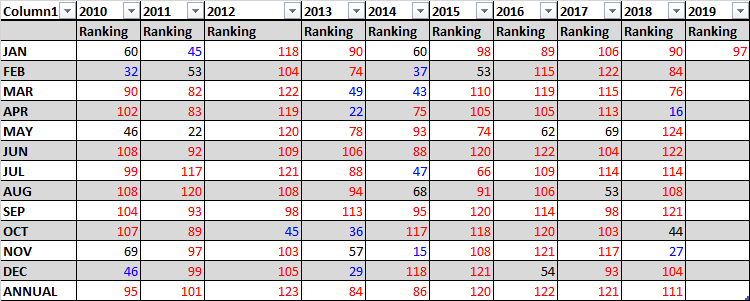
Indeed the winter started out mild but got progressively colder relative to average across the lower 48 states. I suspect that February will be close to the average ranking of 62 once data for that month is processed around March 7th. As forecast the ranking for winter 2018/19 should be around 90 + or – 10, but we won’t know until NCEI averages are processed in a few days.
All this means that as suspected the winter turned out to be slightly above average temperature wise across most of the U.S. If you live anywhere across the northern tier of states and in particular the Midwest you may be asking where is global warming? Brrr. We need it! Well, be careful what you are asking for. 😉
O.k. Now that we have established that our forecast was half decent for the last season let’s use the same techniques to forecast temperature rankings for this spring.
First, let’s look at current water temperatures anomalies surrounding North America:
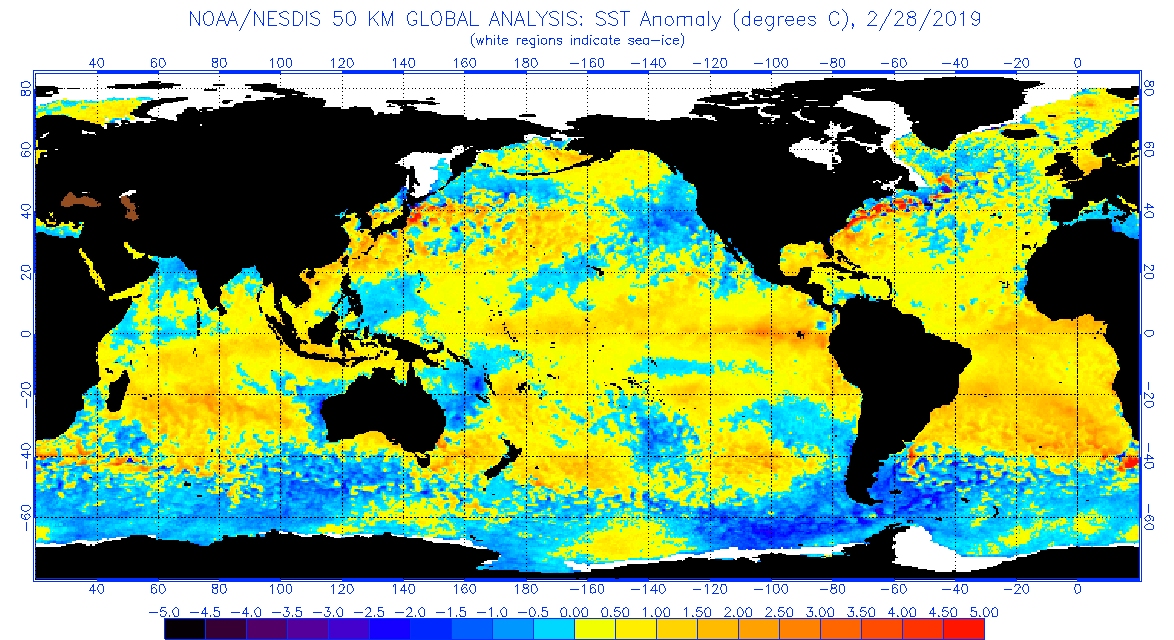
These have cooled off considerably off the West Coast since December 1st due to strong cold systems moving into that area over the winter. Temperatures remain above average from the Gulf Coast into much of the Northeast coast. Off hand I’d say that sea surface temperatures look to be a wash affecting air temperatures across the United States except that we see the presence of a weak but developing El Nino. If the El Nino gets up to moderately strong levels during spring expect this feature to tip the balance towards warmth.
Second, I like to look at the strength of the Hudson Bay low or polar vortex at the start of any season:
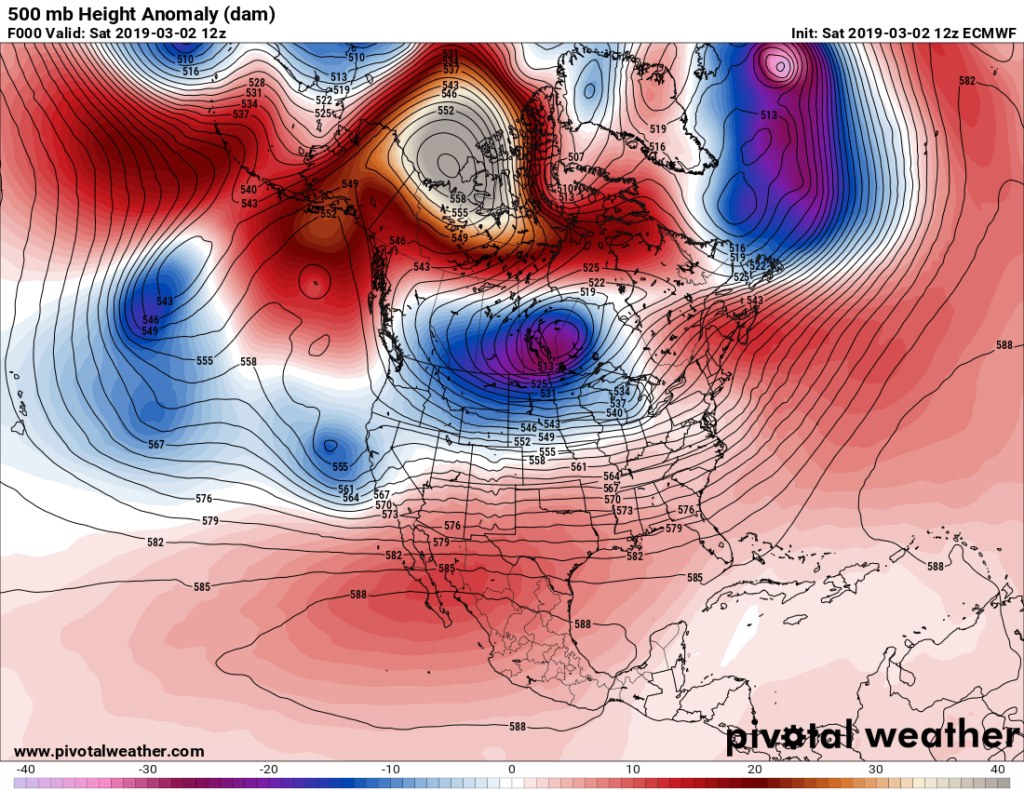
There is no Hudson Bay low per se, but there is a vortex in southern Canada that is poised to unleash some very cold air into the lower 48 states the first week of March. More record ETs should get reported across the Midwest from this. Early spring posies may get nipped in my neck of the woods, Atlanta, from a below freezing airmass, which should urge southward to the Gulf Coast.
Looking at the weather pattern, though, this might be the last strong, widespread arctic surge of the winter. I suspect that March will be a slightly below average month considering any lack of substantial future polar surges after its first week. Here is the NWS forecast for March, which I agree with:
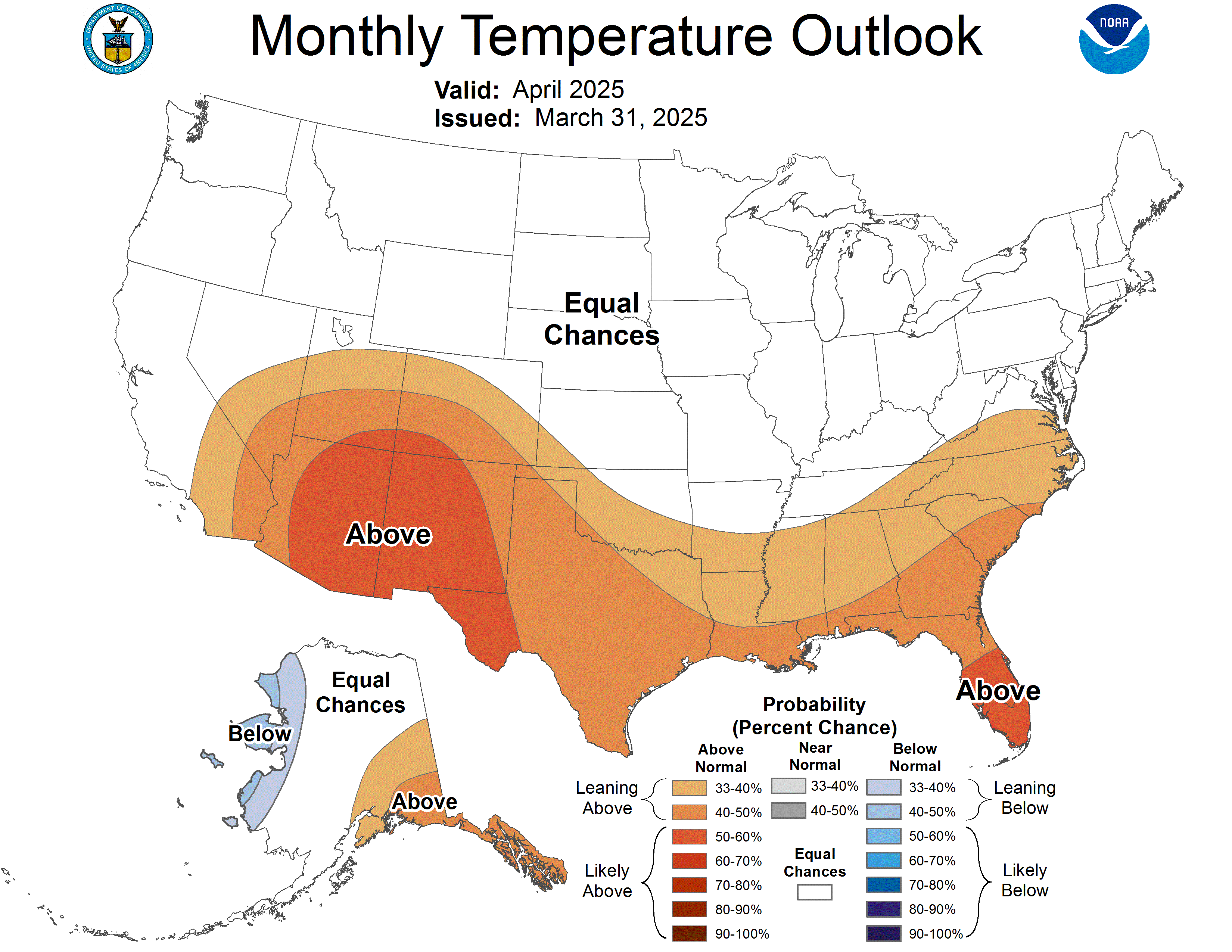
Last, we can get another clue looking at prior ranking and temperature record count data. For this I like to drag out that “Record Scoreboard” (updated through 2/26/19):

Again here we see clues that winter started out mild but got progressively colder. January and February are colored “black” because ratios of daily high max to low min records are near one to one, although tallies slightly favor more warm records than cold. I expect that this trend will continue in March and would not be surprised to see a “blue” month of more daily record min records reported than maxes.
After March I expect a warming trend for April and May, but am very uncertain how anomalous these months will be. Last year we saw a cold April transitioning quickly to a very hot May as surrounding warm global anomalies snuffed out a remaining cold pocket across North America. In 2019 expect more surprises.
Here is the NWS official forecast for spring:
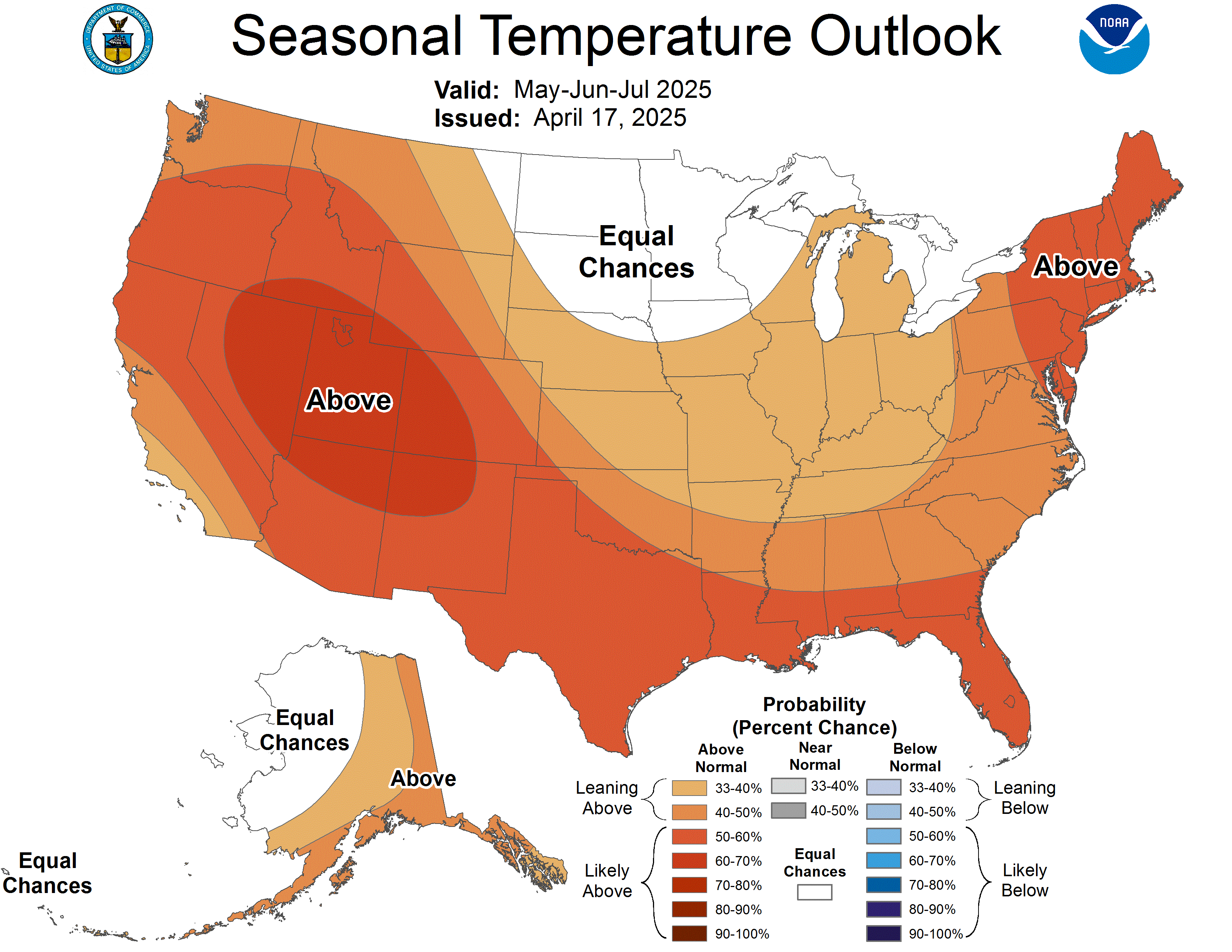
I can’t argue much with the National Weather Service forecast except to suggest that there may be a small below average area in the northern Plains due to very deep snow cover.
Not all seasons in the near future will see above average temperatures, but seasonal forecasters are beginning to”chuck it,” discounting colder than average scenarios due to carbon pollution.
So here are my forecast ranking numbers:

Notice that the past four springs had a ranking at or above 103, but that of 2013 had a cold ranking of 40. As of 2019 the top ranking for any month or season would be 125 since climatological rankings for the United States started in the year 1895. I think that this spring will be ranked below that of the last four. Carbon pollution is definitely making below average seasons more rare. I’m going to guess that the spring of 2019 ranking will be around 80 + or – 10, with average confidence given all of the factors in this post. My forecast is that March will see the lowest monthly average ranking with May having the warmest relative averages, which is going out on a limb a little more. BTW the winter did cool off instead of get milder as originally forecast last time around. Let’s see if this forecast will be a bust or like the last few fairly decent.😎
……………………………………………………………………………………………..
Here is some more weather and climate news from Saturday:
(As usual, this will be a fluid post in which more information gets added during the day as it crosses my radar, crediting all who have put it on-line. Items will be archived on this site for posterity. In most instances click on the pictures of each tweet to see each article.)
(If you like these posts and my work please contribute via the PayPal widget, which has recently been added to this site. Thanks in advance for any support.)
The Climate Guy